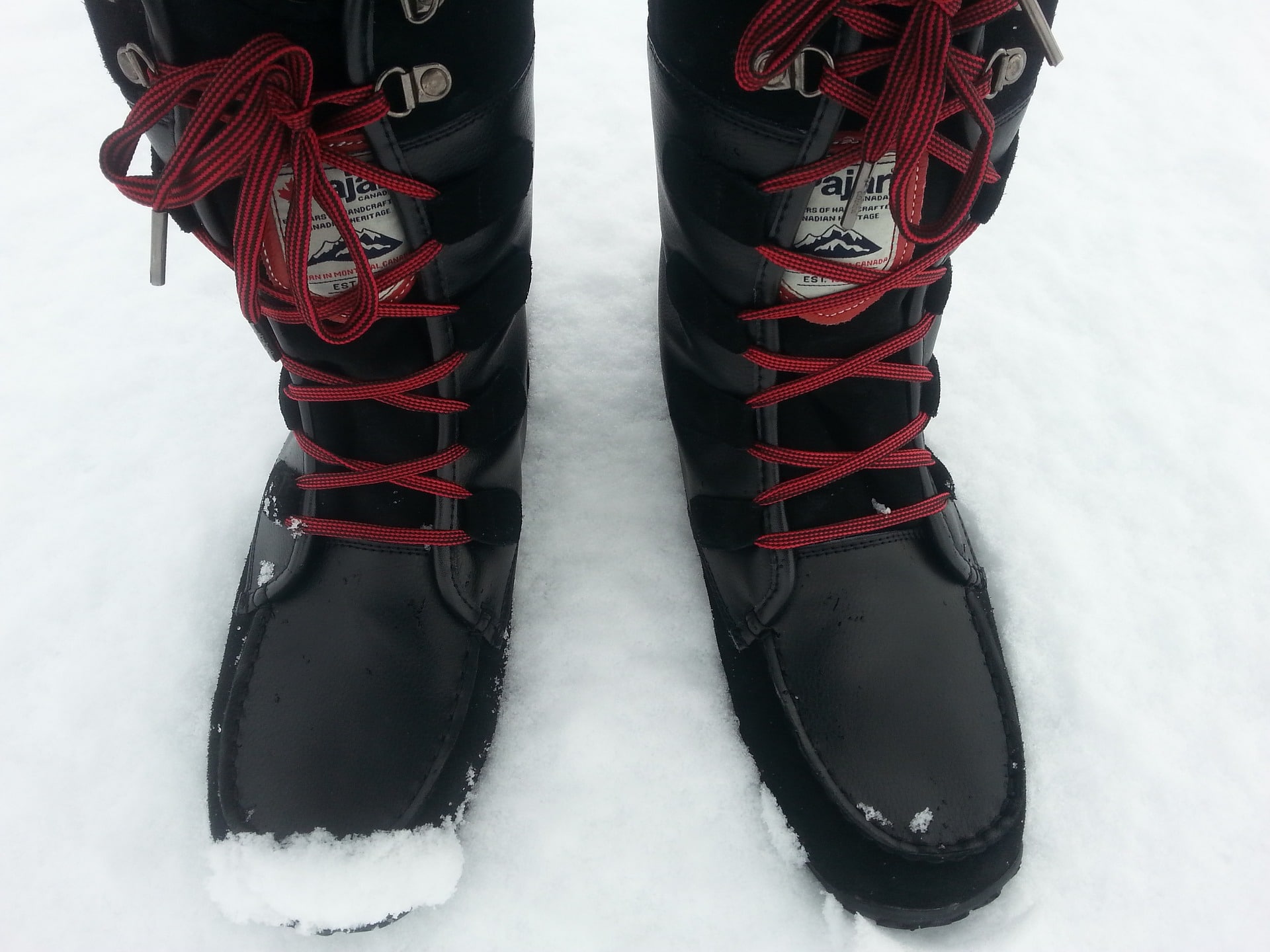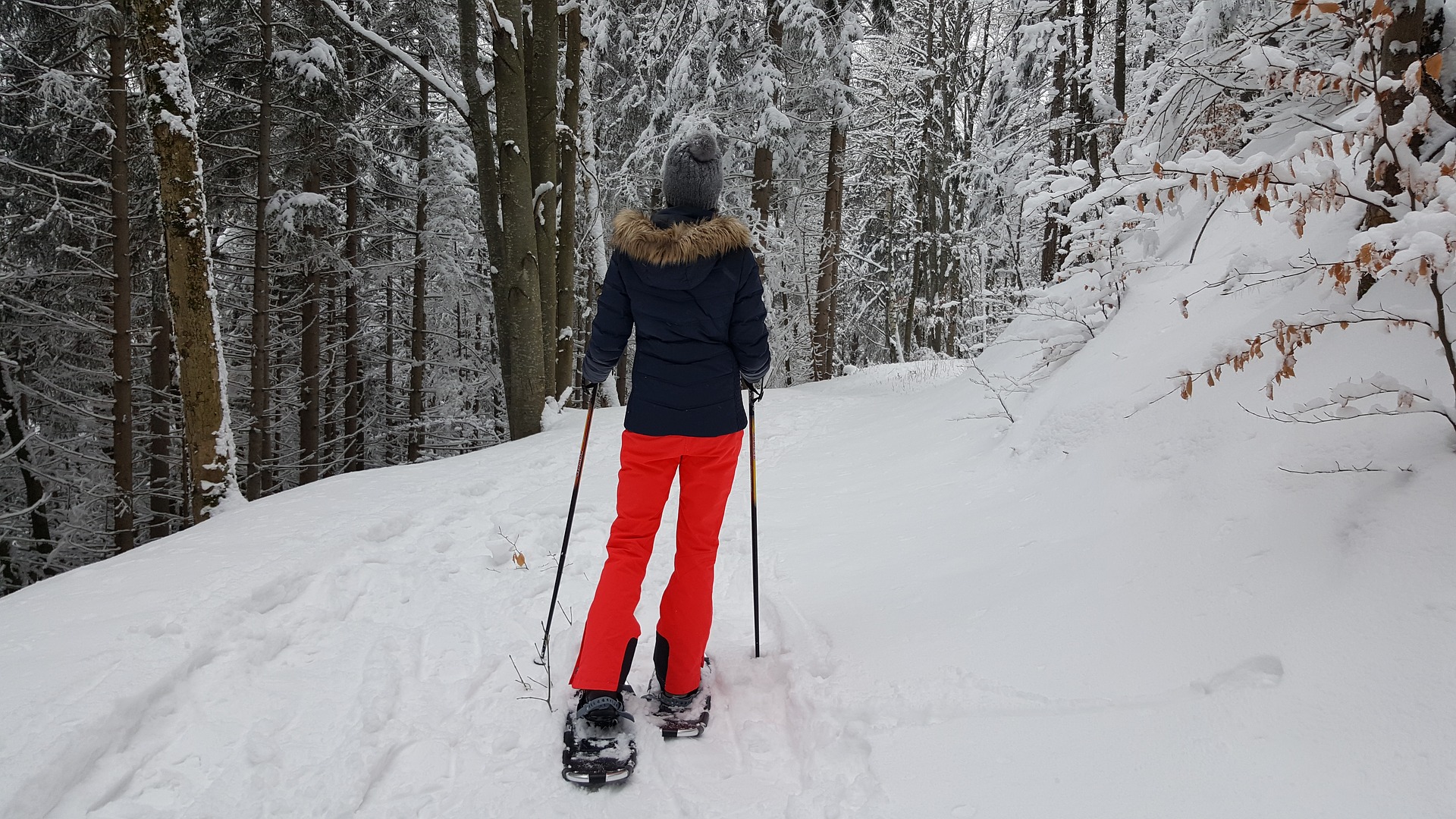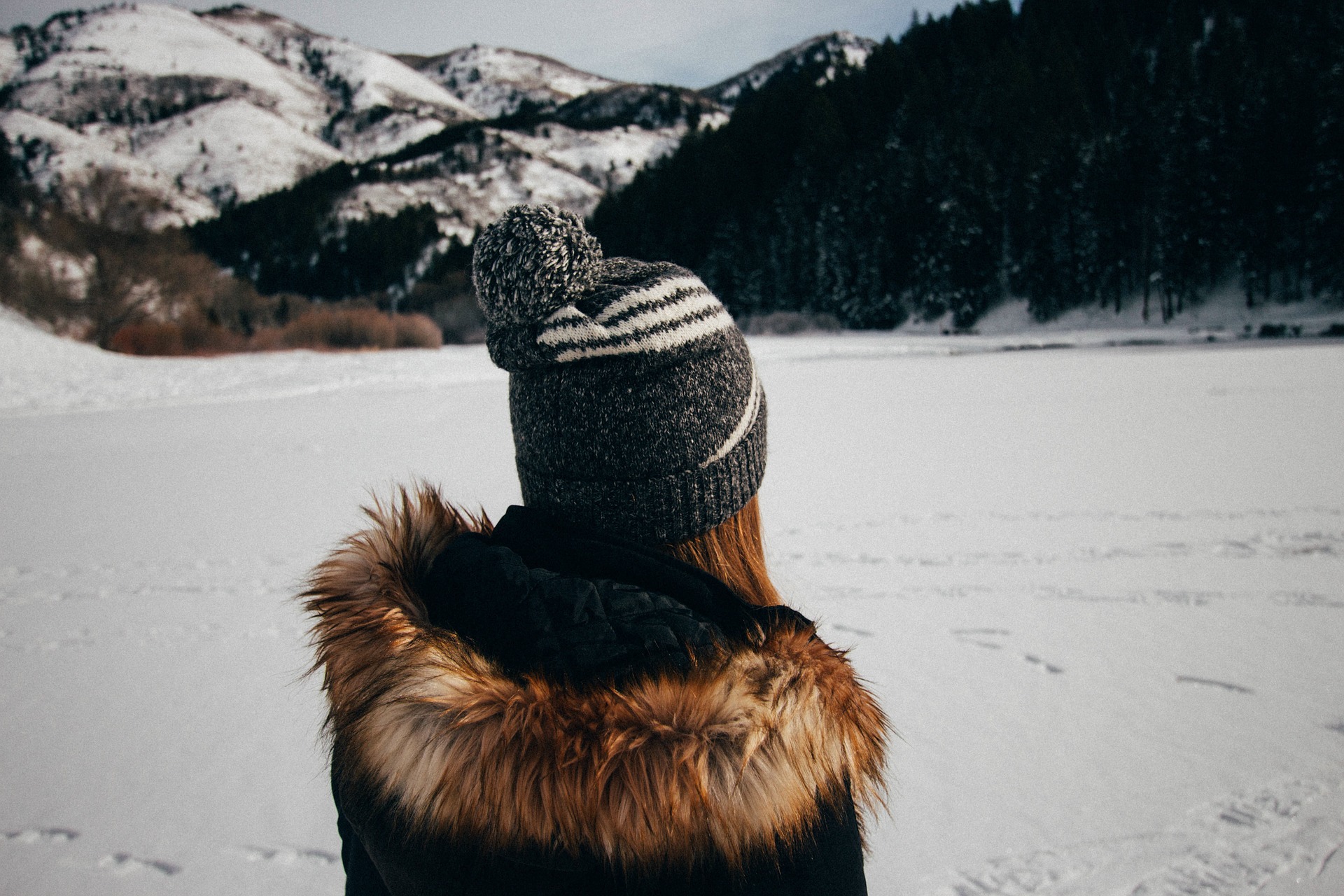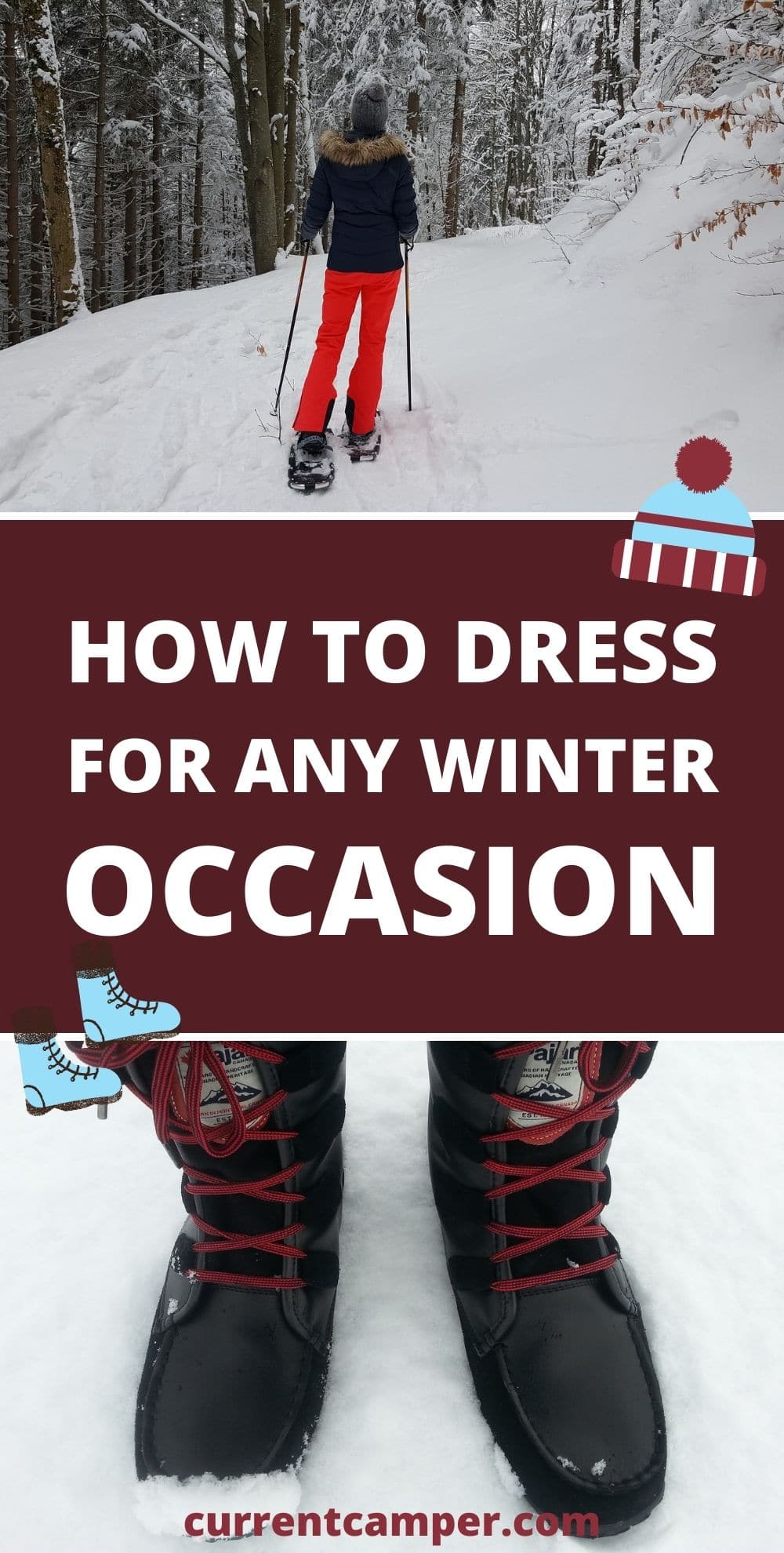You don’t have to bundle up indoors for the winter and wait for the sun to return before getting outside to enjoy nature. You just have to learn how to properly dress for winter! Winter provides plenty of unique opportunities to get outdoors and be active while enjoying all the season has to offer.
Skiing, snowboarding, ice skating, cross country skiing, hiking, and snowshoeing are a few great ways to enjoy winter outdoors, but nothing will make you want to run back inside like frozen fingers and toes. Here, we’ll go over a few tips and tricks on how to dress for success on all your chilly adventures, so you can make the most of your winter while still staying warm and cozy.
Dress For Winter In Layers

Dressing for cold weather activities can be challenging because on one hand you’re bundling up, and on the other you’re going to be active, moving, and increasing your body temperature. This is why it’s so important to dress for winter in layers. There are three main layers and each serves a specific function.
- The Base Layer — This layer is for moisture management. It is the closest layer to your skin and therefore will be in direct contact with any sweat your body produces. The base layer should wick moisture from your skin so you stay dry, which is essential to staying warm and preventing hypothermia. Merino wool is a great example of a moisture-wicking base layer material. This layer is typically lightweight since it’s under the rest of your clothing.
- The Middle Layer — This layer is for insulation. It helps to trap in your body heat to keep you warm. There are many different options for insulating layers. One popular option is polyester fleece. Fleece stays warm even when it gets damp, dries fast, and is very breathable. Its only downfall is that because of its breathability, it fails to block the wind, which is why you should pair it with a wind-protecting outer layer. Other options include down and synthetic insulated jackets. Down jackets have long been known to offer the most warmth for their extremely lightweight and packable form. Synthetic jackets mimic down jackets but with synthetic materials. The downfall to this is they’re often not as warm nor as packable, but they do retain their insulating ability when damp, unlike down jackets.
- The Outer Layer — Last but not least, this layer acts as your shell against rain, wind, and snow. The outer layer can range from a Goretex ski coat to a thin rain jacket, depending on the activity you’re using it for. Waterproof outer layers make water bead up and roll off of you, whereas water-resistant outer layers will protect against wind and a drizzle but won’t keep you dry in a downpour. It’s important to differentiate both of these options from a waterproof non-breathable shell, which is great for spectating but not ideal for being active.
It’s important to note that some of these layers can be combined into one item of clothing. Ski pants, for example, often have added insulation in addition to being an outer layer. Most of the time, all you’ll need under them is a comfortable moisture-wicking base layer.
READ MORE: Snowboarding and Skiing During the COVID-19 Era
Footwear

Just like your winter clothing, your footwear should keep your feet warm and dry. For most adventures, you should wear a pair of winter hiking boots. These boots are made to be waterproof, insulating, and breathable. They are often rated to certain temperatures (as low as -40 degrees Fahrenheit) so you can make sure they’re suitable for whatever conditions you’ll be in.
If you’re worried about your toes getting cold, have poor circulation, or are wearing something less insulating like ice skates or ski boots, definitely consider wearing toe warmers in your shoes for added warmth. It’s important to note that, just like dressing for winter in jackets and pants, you should always wear moisture-wicking socks under your footwear.
Footwear Traction Devices

Winter hiking boots do a great job at keeping your feet warm and dry. However, sometimes you need a little extra traction for certain adventures. These footwear additions could save you from slipping and falling. Hiking poles also make a great addition to these traction devices for extra stability while hiking.
- Microspikes — These are chains with small spikes that can be slipped over your boots. The spikes are typically ¼ – ½ inch long and allow you to dig into ice or snow, enhancing your traction. Microspikes are made to be used on relatively flat or low-angle slopes like winter hiking. They do add weight to your feet and should be worn only on the slick sections of your hike as opposed to the entire time. Microspikes are small and easy to throw in a backpack, making them a great device to bring along on any winter hike in case of unexpected ice or snow.
- Crampons — These have hard foot frames with large spikes on the bottom. Crampons are attached to your footwear with either a tension lever or a strapping system. The spikes are ½ – 1 inch long and should be worn over sturdy, ankle-high boots. Crampons are meant to be used for ice climbing and mountaineering. There are also versions of crampons made for hiking, characterized by shorter spikes and a lighter weight.
- Snowshoes — These are wide, lightweight foot frames that are strapped onto your footwear. They have a wide frame so that they can distribute your weight over a larger area, allowing you to walk over deep, powdery snow without sinking in. They’re meant to be worn on flat or low-angle terrain in snowy conditions. Though some snowshoes feature spikes for extra traction in mixed conditions, they’re not meant to be used on icy terrain. The deeper the powder and greater your weight, the larger the snowshoe will need to be to stay afloat.
Heads, Hands, & Extra Warmth

Keeping warm on your winter adventures doesn’t stop at jackets and footwear. Even if your whole body is all bundled up, you can lose up to 50 percent of your body heat just by not covering your head. This is why a warm hat (and a waterproof hood if it’s raining or snowing) is key to keeping warm. Depending on the activity you’re doing, you may need a helmet as well, which can double as both head protection and insulation.
You’ll also want to wear gloves or mittens, depending on how much dexterity you need versus warmth. Lastly, carry a couple packs of hand and toe warmers with you in case you need some extra warmth.
READ MORE: Cold Weather Camping Tips
Pin it for later!
